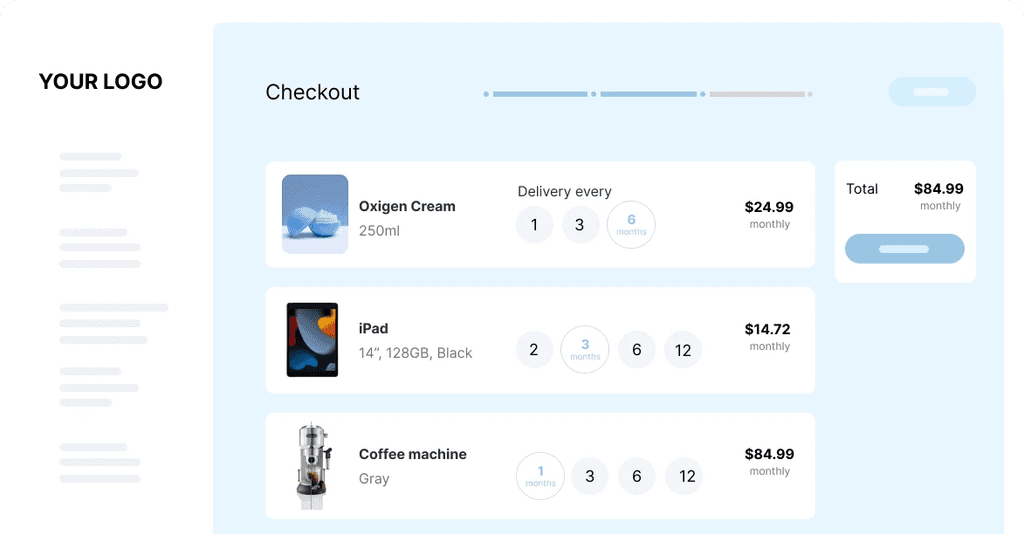How to Start an Equipment Rental Business: Expert Tips
Patricia Bernal

Apr 3, 2025
Navigating the Equipment Rental Landscape

The equipment rental industry is experiencing a resurgence, making it an attractive option for entrepreneurs. This renewed interest is fueled by economic shifts and evolving business needs. Understanding this landscape is essential for anyone considering starting an equipment rental business. For a helpful guide, check out this article on Launching your equipment rental business.
Understanding Market Dynamics
The global equipment rental market has seen significant growth, especially after the initial impact of the COVID-19 pandemic. While 2020 presented challenges, the market rebounded strongly in 2021. The U.S. market, for instance, grew by 3% in 2021, reaching $47.8 billion. Factors such as high inflation and rising construction costs are contributing to this continued growth.
Globally, the market is projected to reach $164.6 billion by 2029, with a 5.1% compound annual growth rate (CAGR). This indicates high demand for rental equipment, offering opportunities for new businesses. New rental businesses can capitalize on flexible rental models and emerging trends. For more detailed statistics on equipment rentals, you can find them here. The post-pandemic economic recovery has further boosted demand across diverse sectors.
Identifying Lucrative Sectors
Several sectors are experiencing particularly strong growth. Construction remains a robust area, driven by infrastructure projects and consistent demand for heavy machinery. The event industry is also rebounding, creating a need for various rental equipment. This includes everything from lighting and sound systems to basic furniture like tables and chairs.
The increase in DIY projects and home renovations has further boosted demand for consumer-oriented rental equipment. This diversification allows entrepreneurs to specialize in niche markets. They can then tailor their services to meet specific customer requirements. However, analyzing local market conditions and demand remains crucial before focusing on a particular niche.
Positioning for Success
Successful rental operators are adapting to this dynamic market by focusing on flexibility and customer service. They recognize that businesses are increasingly opting to rent rather than buy equipment. This is often due to cost savings and access to specialized tools.
Offering a diverse range of equipment and excellent customer support are key differentiators. Embracing technology, such as online booking platforms and inventory management systems, also streamlines operations and enhances customer experience. Adapting to these evolving needs is essential for building a thriving business.
Finding Your Profitable Niche in the Rental Market

The success of your equipment rental business depends heavily on choosing the right niche. This means finding a specific area within the rental market that has substantial demand but manageable competition. A focused approach lets you tailor your services, marketing efforts, and inventory to a particular customer base. This, in turn, boosts your chances of profitability.
Researching Your Local Market
Thorough market research is essential for niche selection. This involves understanding local demand and competitor activities. Identifying your target market is crucial when launching an equipment rental business. Researching local demand and competitor activities are key components. For instance, if a business focuses on construction equipment for small contractors, offering customizable rental packages and on-demand delivery can address their specific needs.
Using tools like Google Trends can help you identify trends and choose the right equipment. In areas with significant construction, heavy machinery rentals might be a smart move. On the other hand, in densely populated urban areas, AV equipment rentals might be more profitable. Understanding these market dynamics helps entrepreneurs tailor offerings to local needs. Learn more about starting an equipment rental business here.
Additionally, consider surveying and interviewing potential customers. This direct feedback offers valuable insights into unmet needs and preferences within your local market. Are there specific types of equipment difficult to find? Are current rental rates too high? This information can highlight market gaps your business can fill.
Evaluating Potential Niches
After identifying potential niches, evaluate them based on several factors. Consider the initial investment required for each. This includes the cost of the equipment itself, storage space, and any necessary licenses or permits. Balance this against the potential return on investment. Some niches might have higher rental rates with lower demand, while others have lower rates but higher volume.
Also, factor in ongoing maintenance costs. Heavy machinery requires more frequent and costly maintenance than smaller tools. This directly impacts your overall profitability. Finally, consider the rental frequency. Equipment rented regularly generates more revenue than equipment sitting idle.
To help visualize these factors, let's examine a few popular equipment rental niches:
Popular Equipment Rental Niches
Comparison of different equipment rental market segments based on investment requirements, potential returns, and market demand
Rental Niche | Initial Investment | Maintenance Costs | Average Rental Rates | Market Demand |
|---|---|---|---|---|
Construction Equipment | High | High | High | Moderate |
Party/Event Equipment | Moderate | Low | Moderate | High (Seasonal) |
AV Equipment | Moderate | Low | Moderate | High |
Home Improvement Tools | Low | Low | Low | Consistent |
As you can see, each niche presents a unique profile in terms of investment, costs, and potential returns. Construction equipment, while commanding high rental rates, requires a substantial initial investment and ongoing maintenance. Conversely, home improvement tools represent a lower barrier to entry but also yield lower rental rates. Party/event equipment, while subject to seasonal demand, benefits from lower maintenance costs.
Identifying Underserved Opportunities
By analyzing market demand, competition, and operational costs, you can uncover underserved opportunities in your region. This allows you to focus on niches with the best demand-to-competition ratios. For example, if research reveals high demand for party rental equipment but limited competition, this could be a profitable niche.
Conversely, a market saturated with construction equipment rentals might present challenges. By carefully balancing these factors, you can choose a niche that aligns with market demands and your resources. This sets the foundation for a successful and sustainable equipment rental business.
Crafting Your Rental Business Roadmap

A solid business plan is essential for turning your equipment rental idea into a thriving business. This section will guide you in creating a detailed roadmap, covering all the key elements of launching your venture. This includes defining your unique selling points, setting competitive prices, and creating smooth operational processes.
Defining Your Value Proposition
Your value proposition is what makes your business stand out. It's the distinct advantage you offer customers, encouraging them to choose you over the competition. What makes your business special?
Do you offer specialized equipment not easily found elsewhere? Perhaps you provide exceptional customer service, faster delivery, or flexible rental agreements. Clearly defining this value proposition is key to attracting and keeping customers.
Understanding your target audience is crucial. Are you focusing on contractors? They might prioritize reliability and quick equipment access. DIY homeowners, however, may value affordability and helpful advice. Tailor your offerings to resonate with your target market.
Developing Competitive Pricing Models
Pricing requires careful consideration. You need to charge enough to cover costs and make a profit while staying competitive. Research your competitors' pricing to understand the current market.
Consider factors like equipment type, rental duration, and changes in demand. This ties into your value proposition. If you offer premium services, you can justify higher prices.
If you're competing on price, ensure your rates reflect that while remaining sustainable for your business. Launching an equipment rental business involves strategic choices, like selecting your niche and understanding how equipment loses value over time.
Choosing the right equipment depends on local demand. However, consider the depreciation of assets, which can’t be expensed immediately but must be accounted for annually. This requires sound financial planning to manage asset value and ensure profitability. Learn more about starting an equipment rental business here.
Streamlining Operational Workflows
Efficient operations are essential for any successful rental business. This encompasses everything from acquiring and maintaining equipment to managing inventory and providing excellent customer service. Develop clear processes for every step of the rental process, from initial booking to final return.
Leverage technology to streamline your operations. Rental management software can help track inventory, manage bookings, process payments, and generate reports. Automating these tasks reduces manual work, minimizes errors, and frees up your time.
Addressing Legal and Financial Considerations
Starting an equipment rental business requires careful attention to legal and financial details. Choose a suitable business structure, such as a sole proprietorship, LLC, or corporation. Secure all necessary licenses and permits.
Obtain adequate insurance to protect your equipment and business from potential risks. Develop realistic financial projections, factoring in equipment depreciation, maintenance costs, and operating expenses. Solid financial planning is essential for securing funding, managing cash flow, and ensuring long-term profitability. A comprehensive business roadmap sets a strong foundation for your equipment rental venture and positions your business for success.
Mastering Finances and Funding Your Rental Startup

Launching an equipment rental business requires a strong grasp of financial realities. It takes careful planning, strategic decisions, and efficient use of resources. This section explores key financial considerations for your rental startup, including startup costs, funding options, and managing cash flow. For more insights into common rental challenges, check out this helpful resource: How to master renting issues in business.
Understanding Startup Costs
Before investing in equipment, it's essential to calculate your startup expenses. These will vary based on your operation's size and scope. However, some common costs apply across the board.
To help you visualize these costs, we've compiled a detailed breakdown in the table below:
Equipment Rental Business Startup Costs
Detailed breakdown of typical initial investment requirements for starting an equipment rental business
Expense Category | Small Operation | Medium Operation | Large Operation | Notes |
|---|---|---|---|---|
Initial Equipment Purchase | $25,000 - $75,000 | $100,000 - $250,000 | $500,000+ | Dependent on equipment type and quantity |
Facility Costs (Rent/Utilities/Renovations) | $1,000 - $3,000/month | $3,000 - $10,000/month | $10,000+/month | Can be reduced by operating from home initially |
Insurance (Equipment, Liability, Business Operations) | $500 - $1,500/year | $1,500 - $5,000/year | $5,000+/year | Shop around for the best rates |
Marketing and Advertising | $500 - $2,000/month | $2,000 - $5,000/month | $5,000+/month | Consider online and offline strategies |
Software and Technology (Rental Management Software) | $50 - $200/month | $200 - $500/month | $500+/month | Choose a solution that scales with your business |
Licenses and Permits | $200 - $1,000/year | $1,000 - $3,000/year | $3,000+/year | Varies by location and business type |
This table offers a general overview. Your actual costs may differ. Careful research and planning are crucial for developing a realistic budget.
Exploring Funding Options
Securing the necessary capital is often a vital step. Several funding options are available, each with its own set of pros and cons.
Self-Funding: Using your savings offers maximum control but might limit your initial scale.
Small Business Loans: Bank loans provide access to more significant capital. However, they come with repayment obligations and interest.
Equipment Financing: This specialized financing allows you to purchase equipment using the equipment itself as collateral.
Investor Partnerships: Bringing in investors can infuse capital and expertise. This, however, requires sharing ownership and profits.
Mastering Cash Flow Management
Effective cash flow management is essential for long-term success once your business is up and running.
Pricing Strategy: Implement a pricing model that covers your costs, generates profit, and stays competitive.
Payment Terms: Establish clear payment terms with customers to ensure prompt payments for rentals.
Expense Control: Carefully monitor and manage expenses to avoid overspending and maximize profits.
Seasonal Adjustments: If your business is subject to seasonal changes, adapt your operations and marketing accordingly.
Understanding the financial side of the equipment rental industry is crucial. In the U.S., sole proprietor equipment rental businesses average $168,007 in annual revenue. However, they also average $182,243 in annual expenses. This often results in a net loss, frequently attributed to non-cash depreciation, which is typically around 31% of revenue. This highlights the importance of meticulous financial planning and cost control. For more in-depth financial statistics, see this resource. The industry's financial performance can fluctuate significantly based on equipment type and location. Entrepreneurs need to conduct thorough market research and develop tailored business models. Strategic cost reduction and revenue growth strategies are key to achieving profitability. By diligently planning your finances, exploring suitable funding options, and proactively managing your cash flow, you can position your equipment rental business for sustainable growth and profitability.
Building Systems That Maximize Equipment Value
Running a successful equipment rental business depends heavily on operational efficiency. This means implementing systems that not only maintain your equipment but also ensure it retains its value over time. This section covers key operational strategies, from acquiring and maintaining equipment effectively to managing inventory and creating positive customer interactions.
Strategic Equipment Acquisition
Smart purchasing decisions are essential for success. This involves carefully weighing the initial cost of equipment against its projected long-term value. Don't simply opt for the cheapest option. Instead, consider crucial factors such as durability, maintenance needs, and estimated rental lifespan.
For instance, a more expensive, high-quality piece of equipment might require less maintenance and have a longer rental life than a cheaper alternative, ultimately offering a better return on investment.
Think about starting with a combination of new and used equipment. New equipment typically comes with warranties and greater reliability, while used equipment can help lower your initial investment. Strategically allocate resources by prioritizing new equipment for popular items and using quality used equipment for those rented less often.
Optimizing Equipment Utilization Through Scheduling
A robust scheduling system maximizes equipment usage and minimizes downtime. Think of your operation like a well-oiled machine, where each component works in harmony for optimal performance. Software solutions can track reservations, schedule maintenance, and generate usage reports.
These reports are invaluable for identifying bottlenecks, optimizing scheduling, and guaranteeing equipment availability when customers need it.
Preventative maintenance is also crucial for avoiding costly breakdowns and extending the life of your equipment. Much like routine oil changes for a car, regular inspections and maintenance prevent unexpected problems and maximize the rental lifespan of your equipment. This proactive approach ultimately saves money and ensures customer satisfaction through reliable equipment performance.
Leveraging Tracking Technology
Tracking technology offers a powerful way to monitor equipment location, condition, and maintenance history. This is especially beneficial for large-scale operations or when equipment is used off-site. GPS trackers can pinpoint equipment, simplifying retrieval and deterring theft.
Furthermore, sensors can monitor equipment usage and condition, providing valuable data for optimizing maintenance schedules and equipment performance. This streamlines operations and reduces the time staff spends on manual tracking.
Streamlining Customer-Facing Processes
The customer experience directly influences your bottom line. Implement systems that make reservations, pickups, and returns seamless while prioritizing safety and equipment care. Online booking platforms allow customers to check availability, reserve equipment, and make payments with ease.
Clear and concise rental agreements outlining terms and conditions protect both your business and your customers. Efficient check-in and check-out procedures minimize wait times and ensure accurate record-keeping.
By prioritizing customer experience, you cultivate loyalty and encourage repeat business, which are essential for long-term success in the equipment rental industry. These systems contribute to a smoother rental process, increasing customer satisfaction and promoting your business's ongoing success.
Attracting Customers and Scaling Your Rental Empire
Attracting a steady stream of customers is essential for any equipment rental business. Whether you're just starting out or managing a large operation, effective marketing strategies are key to increasing visibility and driving bookings. This begins with understanding your target audience and tailoring your message to resonate with their specific needs.
Building a Compelling Online Presence
Your website is often the first point of contact for potential customers. A well-designed website is crucial for showcasing your equipment and services effectively. This includes high-quality photos, detailed specifications, and easy navigation. For example, providing practical details like dimensions, weight, and power requirements helps customers make informed decisions.
Consider implementing local SEO strategies. This helps local customers find your business when searching online for "equipment rentals near me." A strong online presence not only attracts new customers but also serves as a valuable resource for existing ones. For more information, check out this helpful resource: Top 10 strategies to boost your rental business.
Leveraging Local Partnerships and Networks
Building relationships within your community can significantly expand your reach. Partnering with local contractors, businesses, and industry organizations helps create a reliable client pipeline. For example, collaborating with construction companies can generate consistent demand for your heavy machinery rentals.
Networking at industry events and joining relevant associations can help establish your brand and build valuable connections. These connections often lead to referrals and long-term partnerships. This targeted approach strengthens your local market presence and establishes your business as a go-to resource for equipment rentals.
Implementing Effective Customer Retention Strategies
Turning first-time renters into loyal customers is essential for sustainable growth. This involves providing excellent customer service and building strong relationships. One effective strategy is implementing a loyalty program. This could involve offering discounts, exclusive offers, or priority service to reward repeat business.
Gathering customer feedback is another key element of customer retention. This helps you understand their needs and identify areas for improvement. Regularly communicating with customers through newsletters or email campaigns helps you stay top-of-mind and nurture those relationships. This consistent engagement builds trust and fosters loyalty.
Navigating the Current Rental Landscape
The equipment rental industry faces unique challenges, including labor shortages and supply chain disruptions. However, demand for rentals remains strong, driven by factors like infrastructure projects and construction needs. Learn more about the current state of the industry here: the state of the equipment rental industry. Many companies are adapting by using technology like telematics to improve efficiency and customer service. Some businesses are also stockpiling parts to mitigate supply chain issues and using e-commerce platforms to streamline the rental process. These strategies help rental businesses remain competitive and capitalize on the growing demand for flexible rental options.
Embracing Digital Marketing for Equipment Rentals
Digital marketing plays a vital role in reaching a broader audience. This encompasses strategies like search engine optimization (SEO), content marketing, and paid advertising. Optimizing your website and content for relevant keywords helps improve your search engine rankings and attract organic traffic.
Creating informative content, such as blog posts and videos, positions your business as an industry expert and builds trust with potential customers. Paid advertising campaigns on platforms like Google Ads and social media can target specific demographics and interests, driving qualified leads to your website. Regularly tracking your marketing efforts allows you to measure their effectiveness and refine your strategies.
Sharpei offers a payment solution designed for merchants to provide flexible payment options, including rental, lease-to-own, and subscription models. Integrating Sharpei with your storefront can empower customers with more ways to buy, potentially increasing conversion rates and average order value. Learn more about how Sharpei can help grow your business.
Related posts
Ready To Join The Circular Movement?
United for a smarter shopping experience and a better planet












